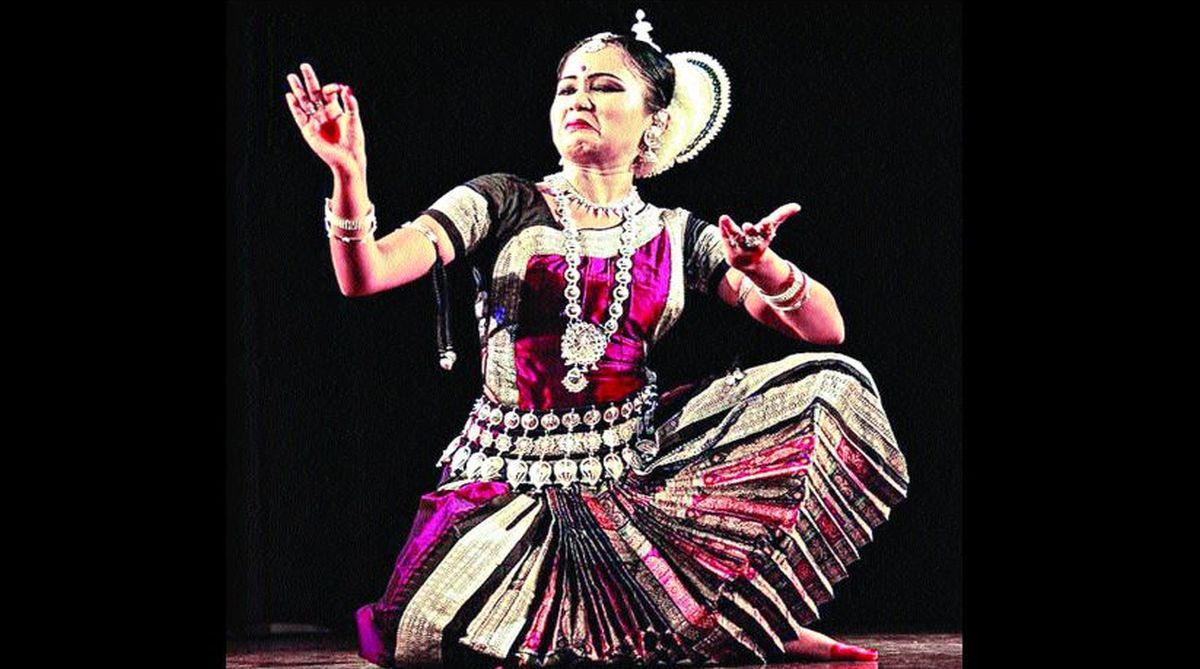Prachi Hota is a young and committed Odissi practitioner. She will make a difference to the dance scenario with her perseverance and talent, two essential ingredients that make an artist.
This reviewer had the good fortune of seeing her perform at India International Centre, New Delhi recently. Her choice of dance pieces was eclectic and not restricted to just the choreographic work of one particular guru.
Advertisement
For the evening performance she had picked from the wide-ranging works of Guru Kelucharan Mohapatra, Guru Gangadhar Pradhan, Guru Pankaj Charan Das, Guru Hare Krishna Behera and moulded her supple and carefully-nurtured body to present their varying styles.
It rather emerged as a distinctive style, which may be called her own. Her gurus and mentors are famed practitioners and teachers of Odissi dance and naturally their choreographic pieces were finely-crafted.
In her milk tooth days, Arpita Venkatesh, a student of the well-known Sangeet Natak Akedemi Awardee Aloka Knungo, had painstakingly nurtured her love for Odissi, which had a far-reaching consequence, when it came to choosing a profession.
She was taught by Guru Hare Krishna Behera, Guru Aruna Mohanty and Madhusmita Mohanty. Presently her mentor in Odissi is Asha Kumari. Hota’s dedication to dance has made her savour and retain the nectar unique to each of her mentors and gurus. A seeker of knowledge, she has always kept her goal in sight.
As per tradition, her recital commenced with Mangalacharan. It was a benedictory verse seeking blessings from her guru and audience. Kalidas’ Manikya Veena Mupalalayanthi, that she continued with was a stuti addressed to Matangi or a fierce form of goddess Saraswati, whose blessing bestows upon the seeker proficiency in art, creativity and knowledge.
Guru Kelucharan Mohapatra had given it a special feature using raga Malika, starting with the melodious raga Hamsadhwani, which smoothly merged into the other ragas to create a garland creating a blissful atmosphere that pleased the aural nerves of the audience.
Significantly Hota was clad in a white costume sporting a green fan that spread out beautifully in all her sitting positions. She was a replica of Saraswati, the goddess of learning.
Description of Saraswati as Suvra Bastrabrita — in pristine white — was easy to imagine. Equally adept in abhinaya, she danced to a composition of Vaishnava poet Gopal Krishna Patnaik, displaying Vatsalya bhava and Bhakti sringar one after the other. Shyama ku Juhara — raga Kafi and taala Khemta — in the sweetness of the Odia language was lapped up eagerly.
Excellence in nritta, nritya and natya are inseparable parts of what we call dance. In fact, none of the three can be performed in isolation. Strictly speaking, a Pallavi whose mainstay is nritta, will look dry and devoid of beauty unless some kind of aesthetic bhava goes along with it.
Hota, with her complete understanding of the aesthetics of dance, blossomed as a dancer with a Pallavi in raga Rageswari and taala ektaali, a choreographic work of Guru Gangadhar Pradhan. The speed of the Pallavi slowly increased in a linear process, creating aesthetic beauty. Her intense expression matched with this midnight raga and was moving poetry, transfixing people’s attention to her.
In between felicitations of dignitaries, the performer quickly changed to a coloured costume appropriate to the dances to follow. Shiva Panchakam, Divya Kundala Hara, a composition of Adi Shankaracharya in raga Patdeep, usually sung in the third part of the day, extolled the many activities of Shiva in a spirit of awe.
The two bhavas of Sringar and Roudra, one after the other, was amazing. The arrows of Manmatha that was supposed to break Shiva’s meditation and see Parvati, who was eagerly waiting for him, had the desired result. Shiva and Parvati were depicted as sensitively as the depiction of the fire that came out from Shiva’s third eye and burnt Manmatha to ashes.
Hota struck a chord in every heart with Vallabhacharya’s eight stanza lyric, Madhurashtakam, where the bhakta describes the honey sweet qualities of Krishna in his physical description, in the description of his activities, places and people dear to him. This was followed up with Shanti-stuti, a re-choreographed work by Guru Aruna Mohanty from the choreographed work of her guru Gangadhar Pradhan.
Strong musical support aided her to give her best. Guru Asha Kumari conducted the beautiful evening of dance.
Hota is well in line to take off as a full-fledged dancer. She emoted the nine rasas as it is spelt out in the Rasa Shashtra and those who enjoyed them were rasikas present that evening.
The nine rasas of shringar, hasya, karun, roudra, veera, bhayanaka, bibhatsa, adbhuta and shanta — love, laughter, empathy, anger, heroism, fear, wonder and peace — were used judiciously, wherever needed in her presentations. She used the rasas to depict her subject matter appropriately.










